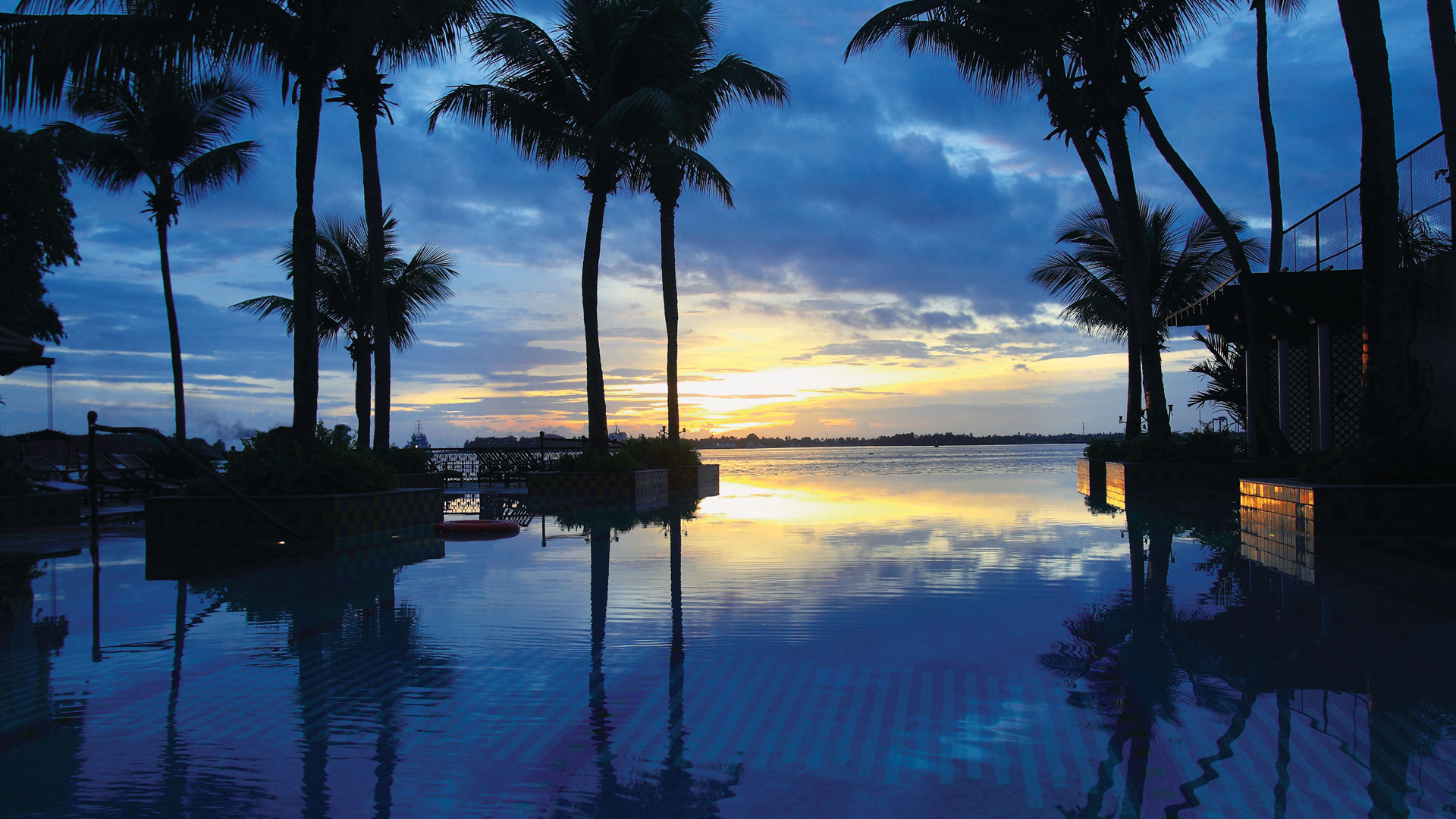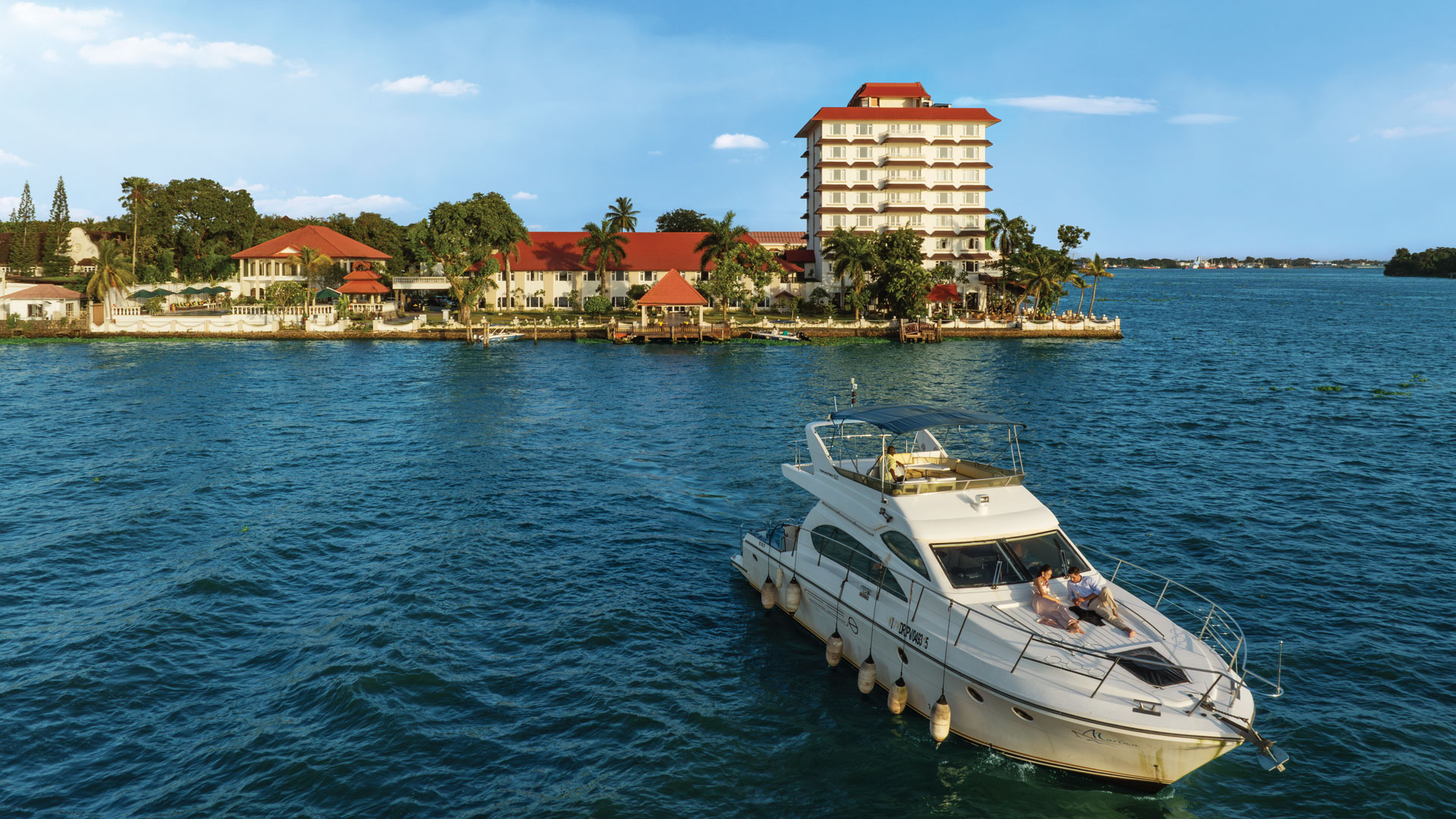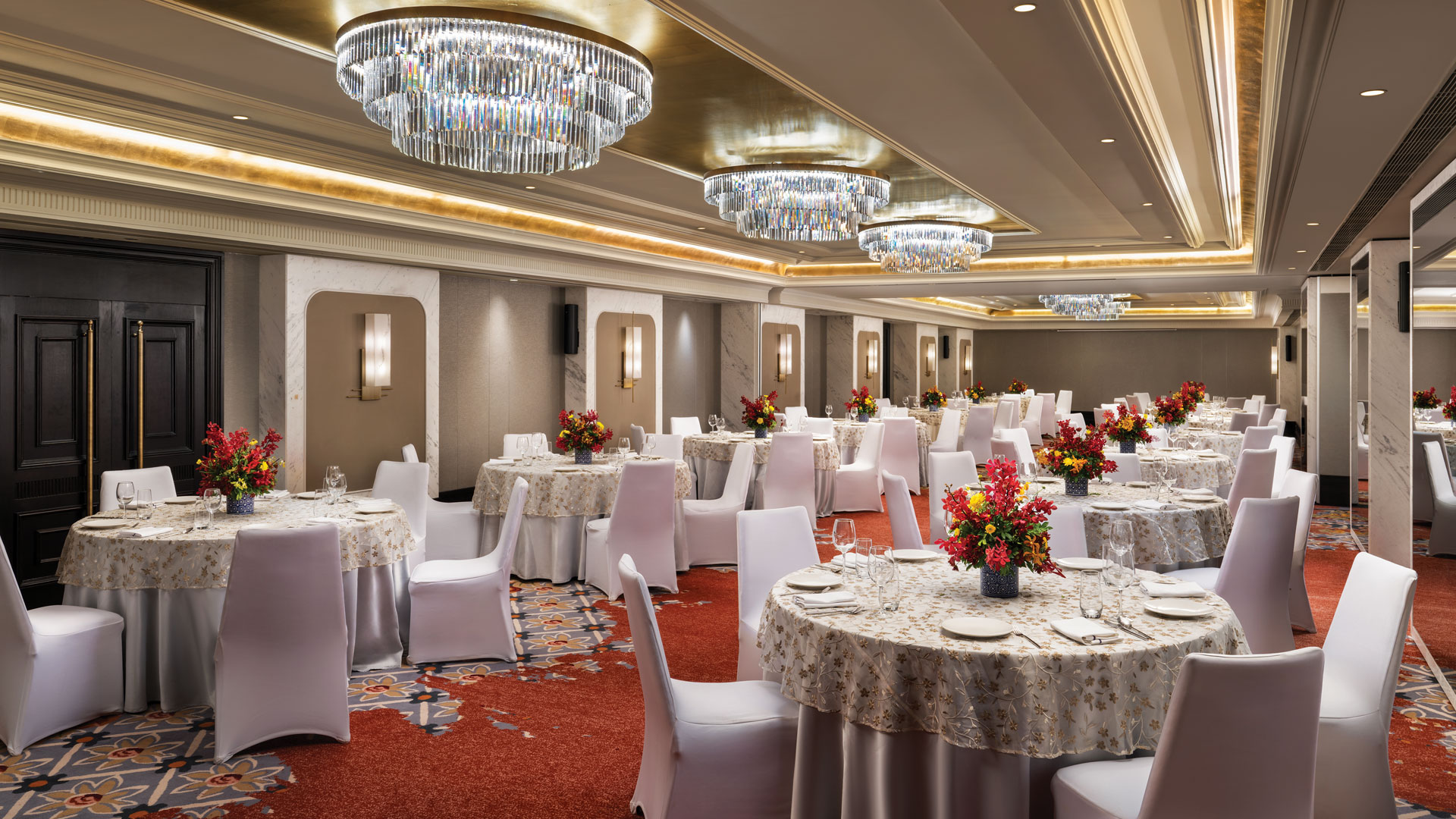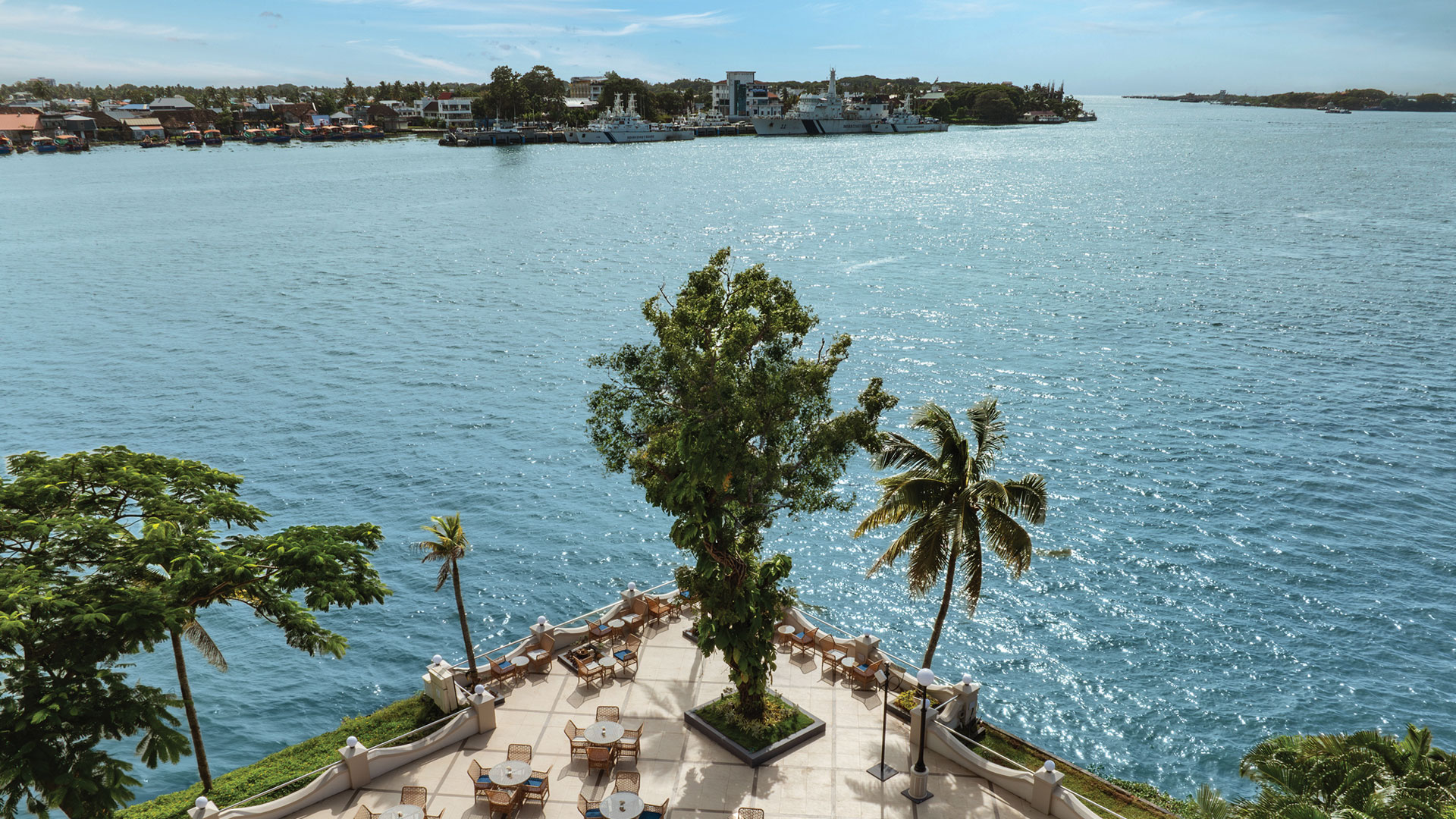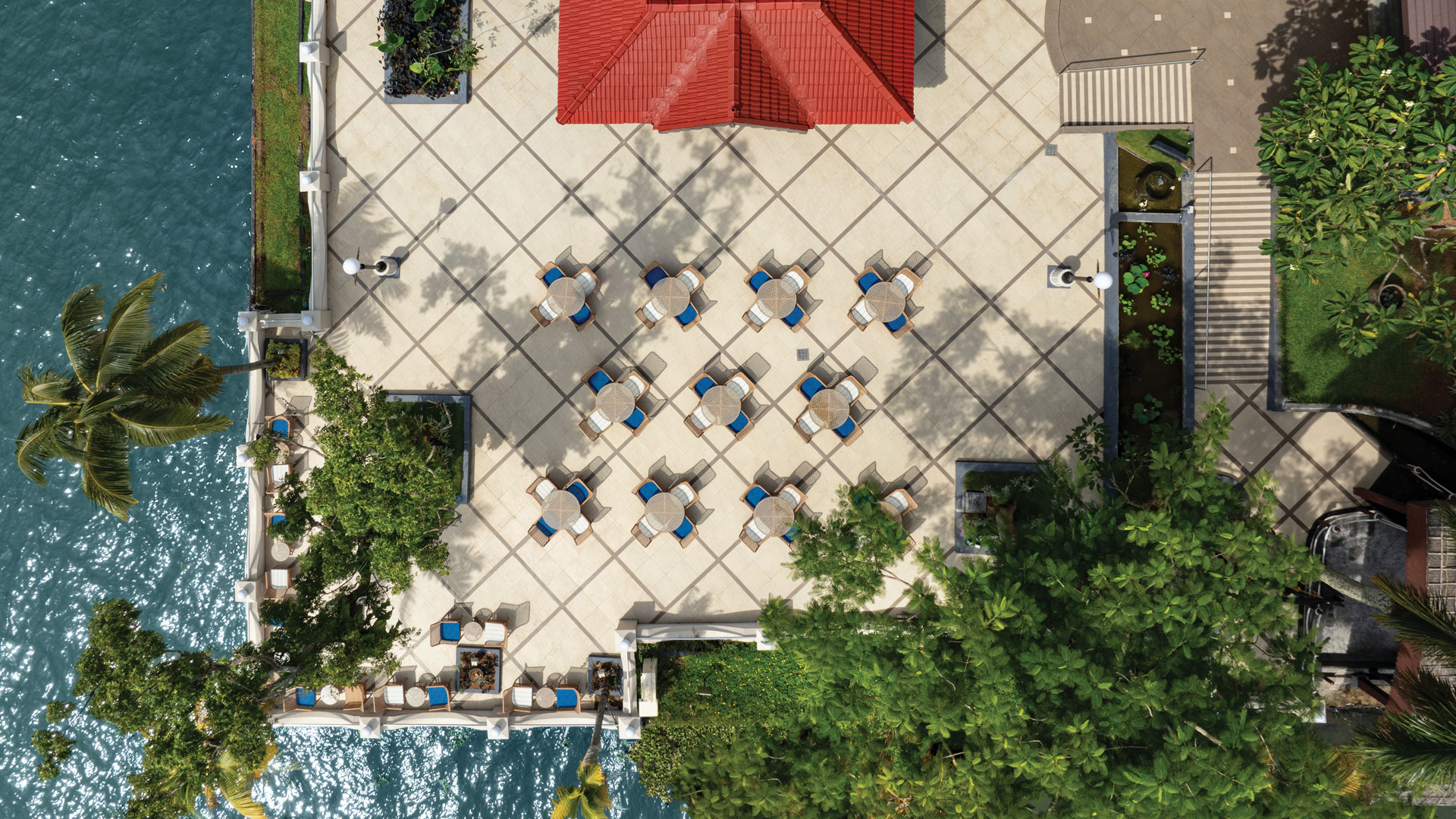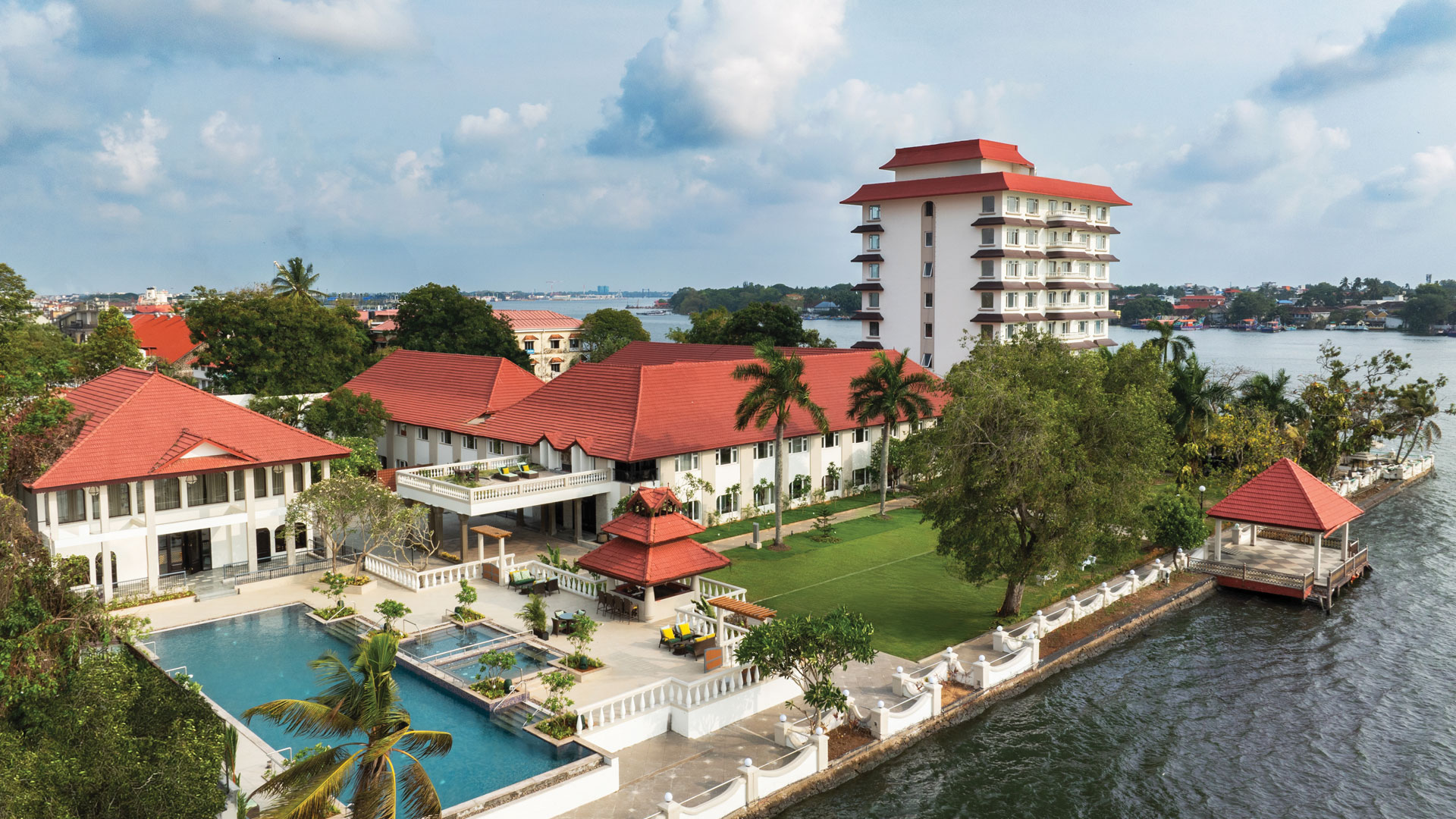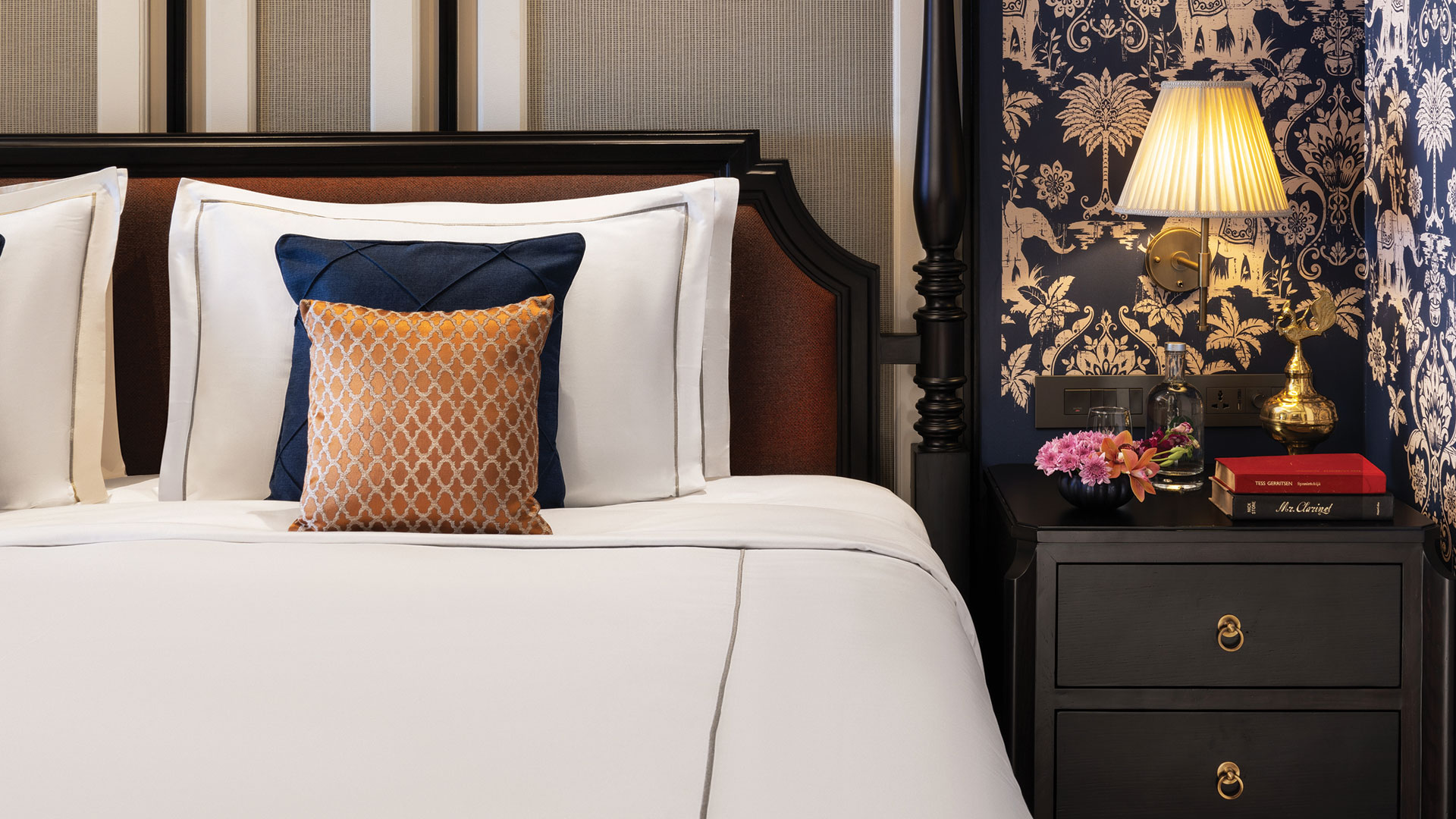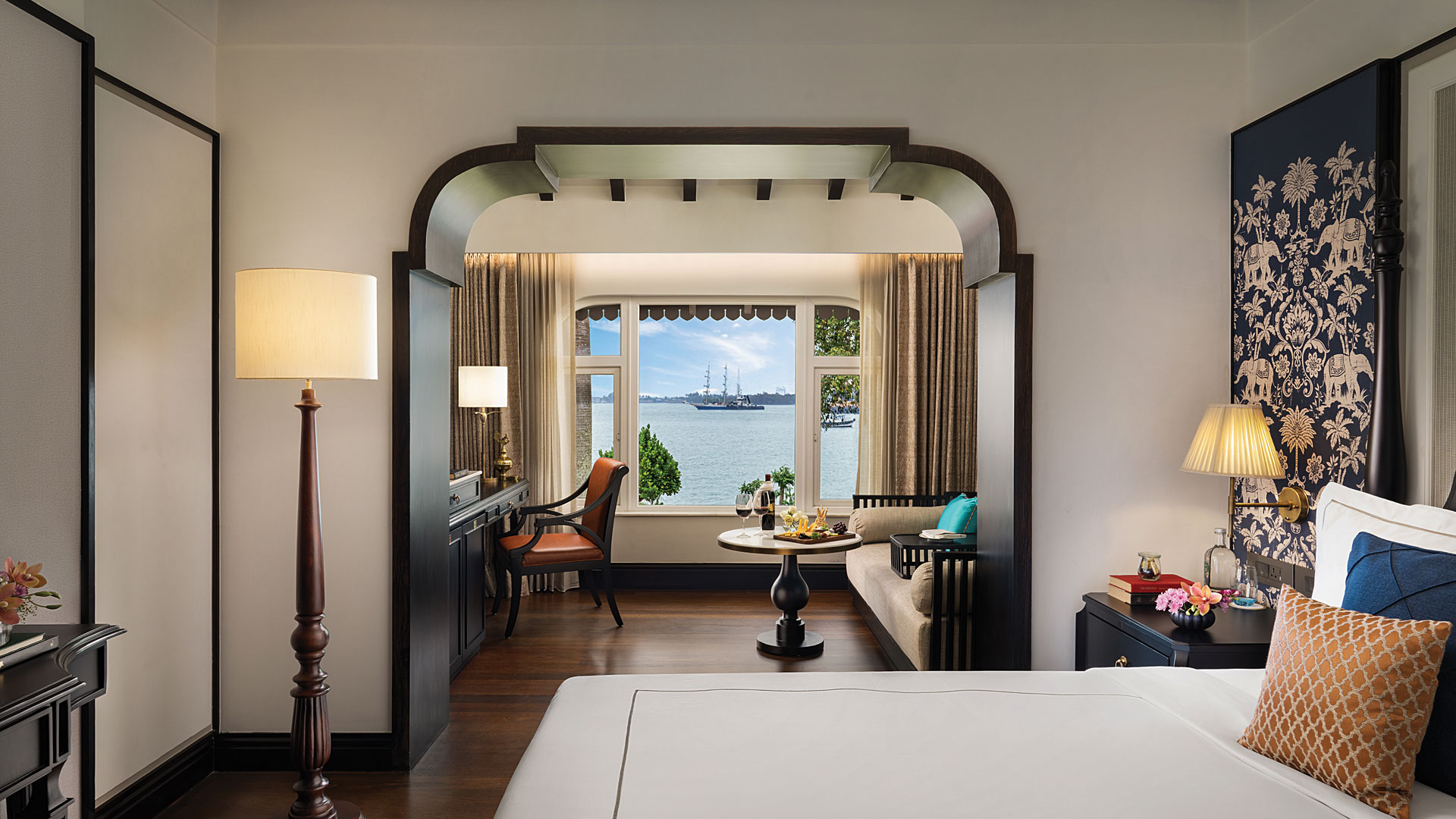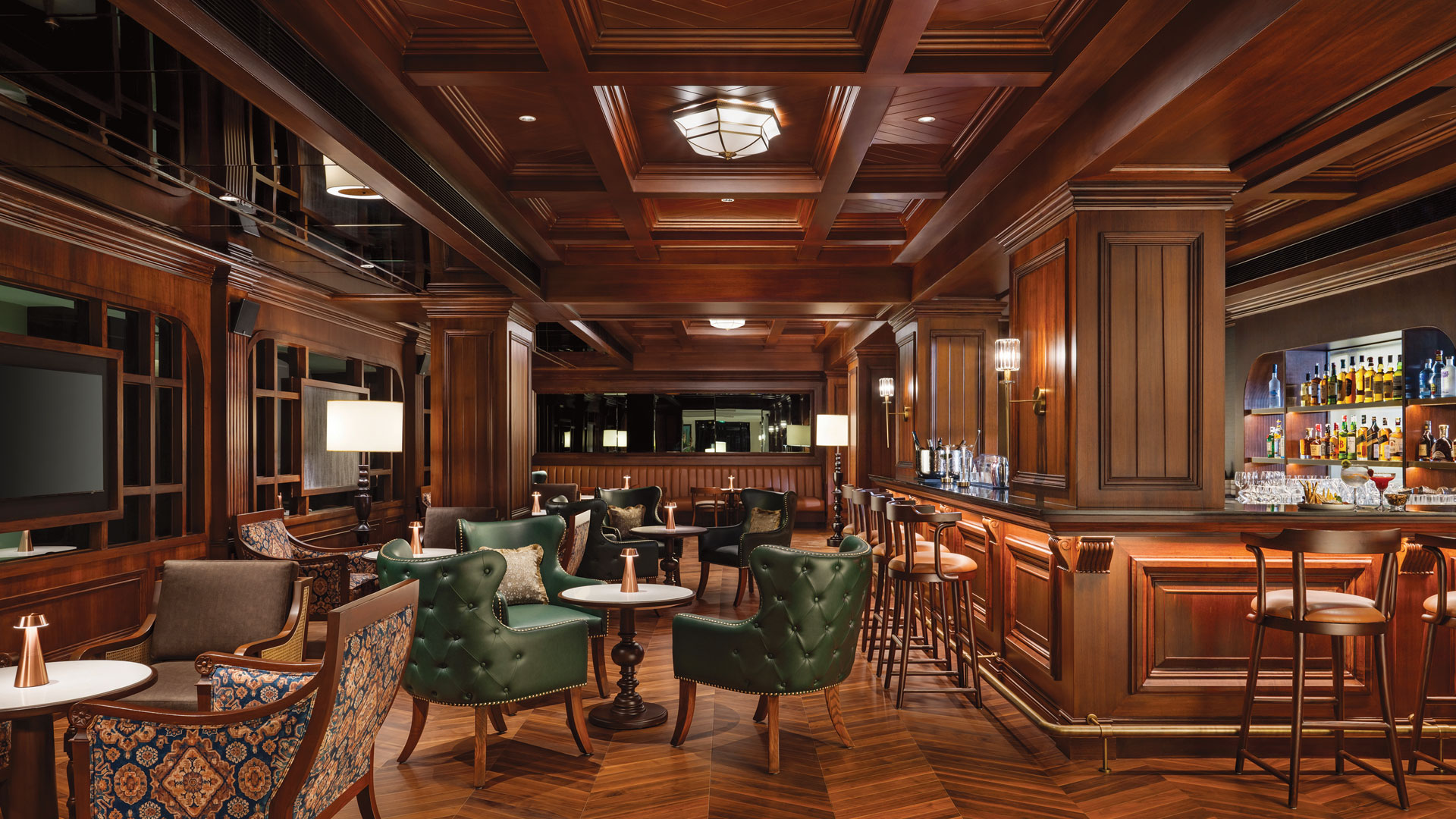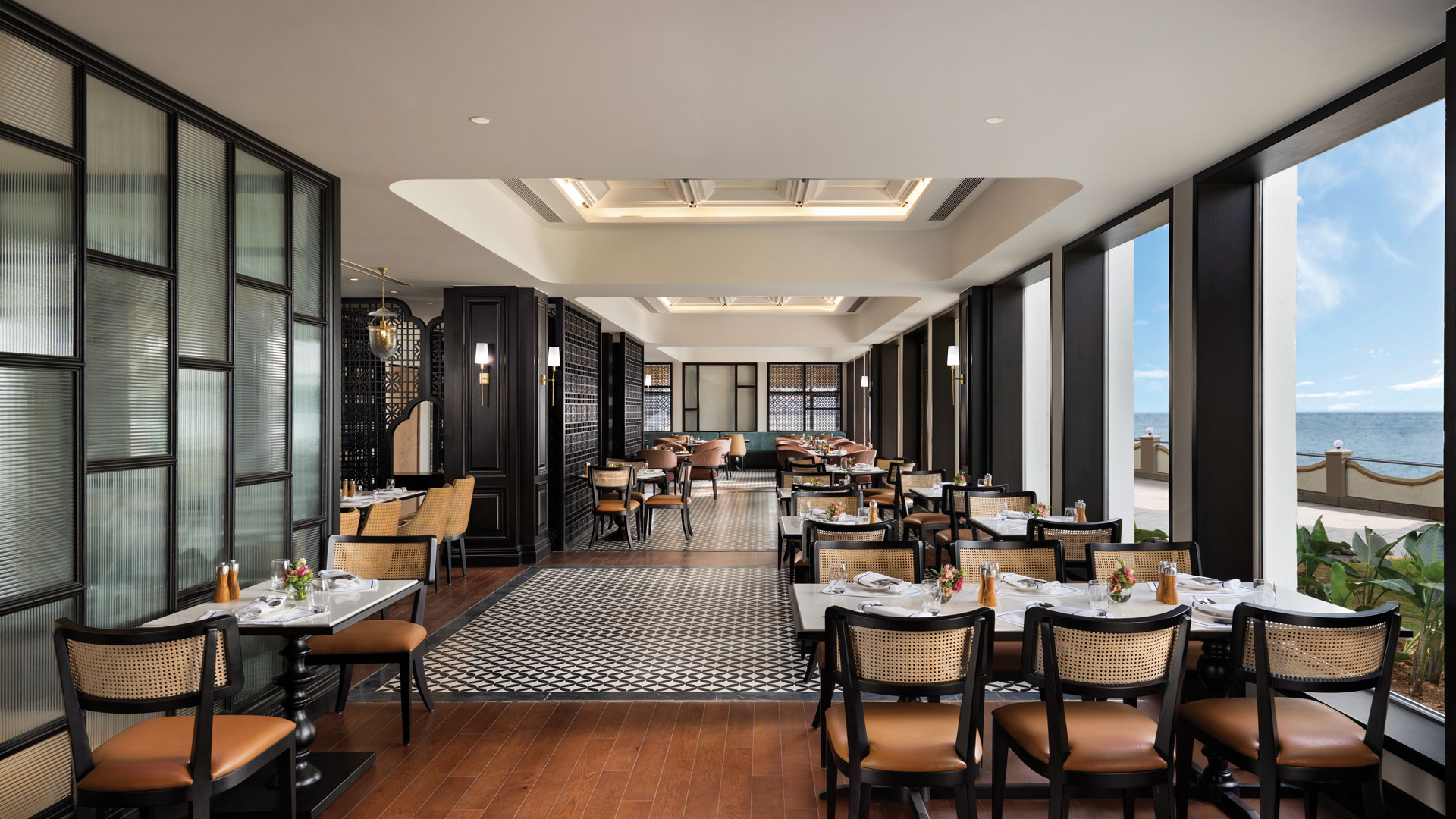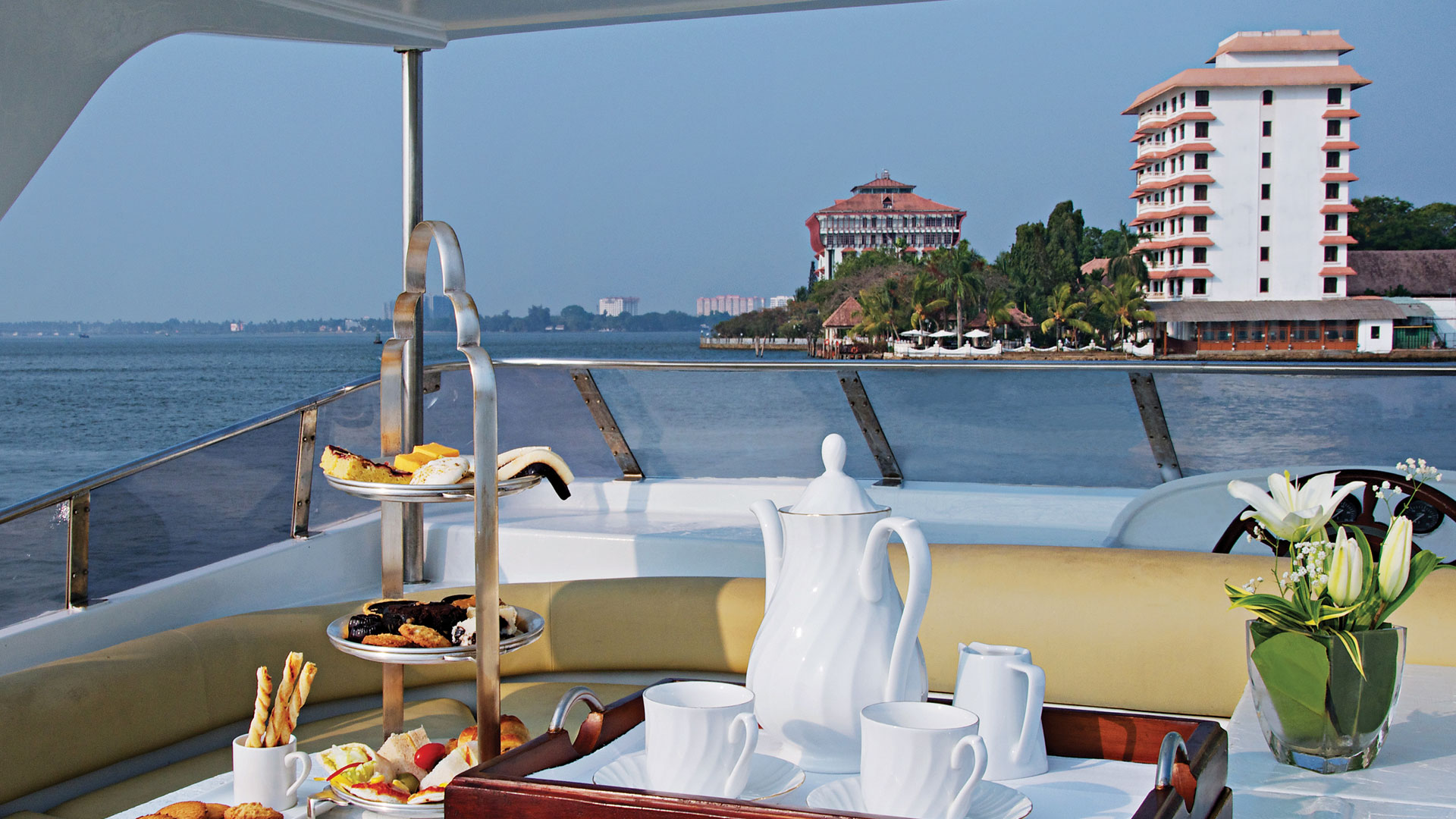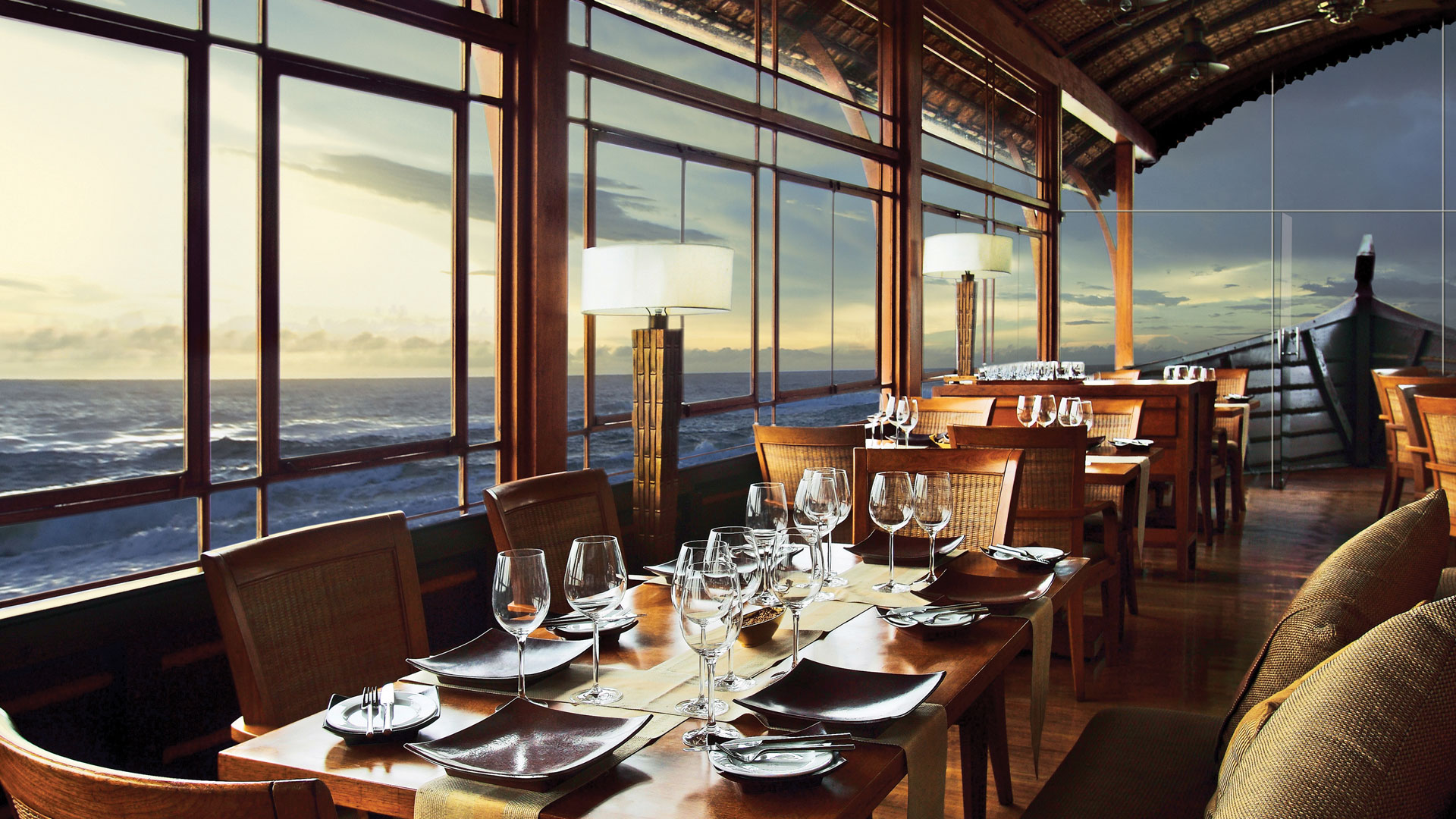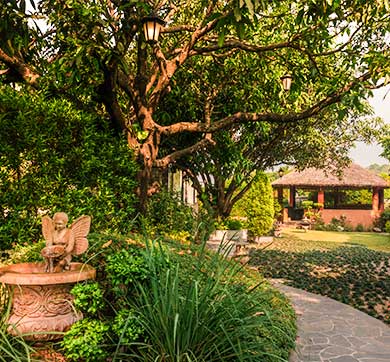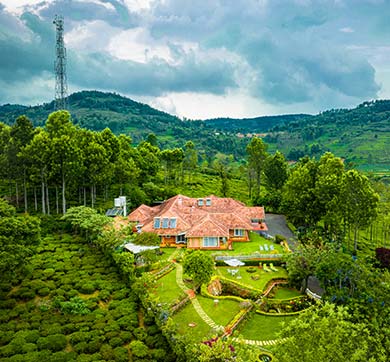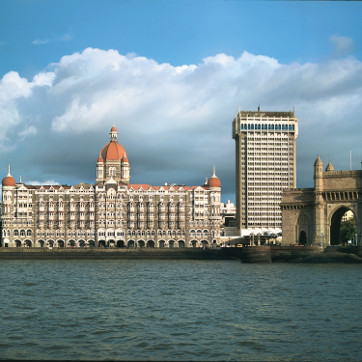March 2025 | 1658 words, 12 slides | 6-minute read
Serene, historic, picturesque, stunning – there are a plethora of adjectives to describe the many charms of the Taj Malabar Resort & Spa situated at the tip of the Willingdon Island overlooking the Kochi Harbour. However, the experience of staying at the 90-year old property, recently refurbished after a year-long mammoth renovation project is, in many ways, indescribable.
The History
First and foremost, there is the rather spectacularly picturesque location. Willingdon Island is the largest artificial island in India claimed from the Vembanad Lake by filling in soil dredged from the sea around a previously existing, albeit tiny, natural island. Home to several important institutions such as the Port of Kochi, the Kochi Naval Base, the Southern Naval Command of the Indian Navy, Plant Quarantine station, Custom House, the Mercantile Marine Department and the Central Institute of Fisheries Technology, Willingdon Island (named after the Governor of Madras Presidency who went on to serve as Governor-General and Viceroy of India during colonial times) is also home to the Cochin Port Maritime Heritage Museum.
Willingdon Island is connected to the mainland through the Mattanchery Bridge and Venduruthy Bridge. Many passenger boats operate daily to the island from Mattancherry, Fort Kochi, Vypin, and Marine Drive making it a busy stretch of blue waters.
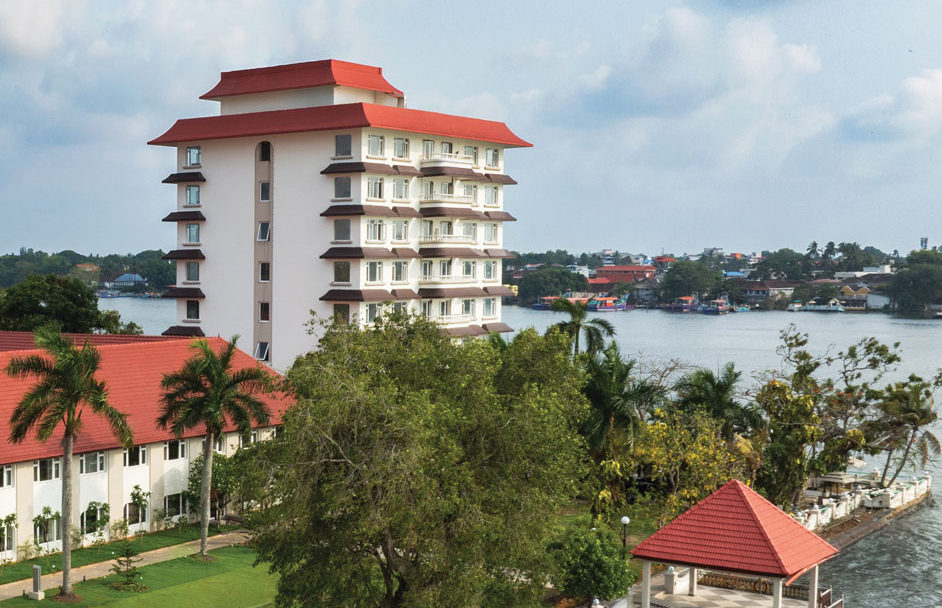
While the island was built in 1928, by 1931 ocean-going steamers had begun to make regular visits to the Cochin (as Kochi was then known) Harbour. By 1934 some shipping lines evinced an interest in bringing passenger vessels. The Bibby Line owners and their agents Harrisons & Crossfields indicated their willingness to call at the Cochin Harbour if the following two conditions were met: proper lighting for the outer channel; and suitable hotel accommodation for disembarking passengers. It was at the suggestion of the shipping companies that the Government eventually decided to build a Government Hostel which was constructed forthwith in two months’ time at a cost of Rs two lakh, a sum that was charged to the port. The hostel opened on 8 March1935 by Messrs Spencer’s and Co. and the first Bibby Liner, ‘Shropshire’, docked at the Cochin Harbour on 9 March, 1935.
Becoming a part of IHCL
The hostel, which was initially known as the Willingdon Island hotel, was later renamed the Malabar Hotel. Initially an L-shaped building with European-style amenities complete with a polished teakwood floor, a swimming pool, facilities for exclusive lunch and dinner parties, it went on to become so successful that soon another wing was found necessary to be added to complete the U-shaped building as it stands today. The hotel that was till then run by D. C. Johar and Co who had, in turn, taken over from its first lessees Messrs Spencer’s and Co., was eventually taken over by the IHCL in 1984. Initially, there was only the Heritage Wing, which was known for its simplicity, ethnic charms and tastefully done interiors consisting of 33 rooms; the block was renovated and started functioning from 14 April 1987 under the IHCL portfolio. As the hotel gained popularity, a new wing known as the Tower Wing, consisting of 63 rooms was added. In 2023, an extensive renovation was undertaken so that all the prime attractions could be retained along with modern amenities and state-of-the-art facilities as expected of a Taj property.
The refurbishment
With the harbour on one side and the port and backwaters unfolding on the other, Taj Malabar Resort & Spa today offers unparalleled advantages of a coastal location and fantastic maritime experiences coupled with gourmet culinary options. With its refurbished 82 rooms and 11 suites, three restaurants and a bar, the amazing waterfront views simply add to its multiple charms. The dining options include: Dolphin’s Point, Mattancherry Bar, Pepper (for global and regional cuisine), and Rice Boat (for the most scrumptious seafood)
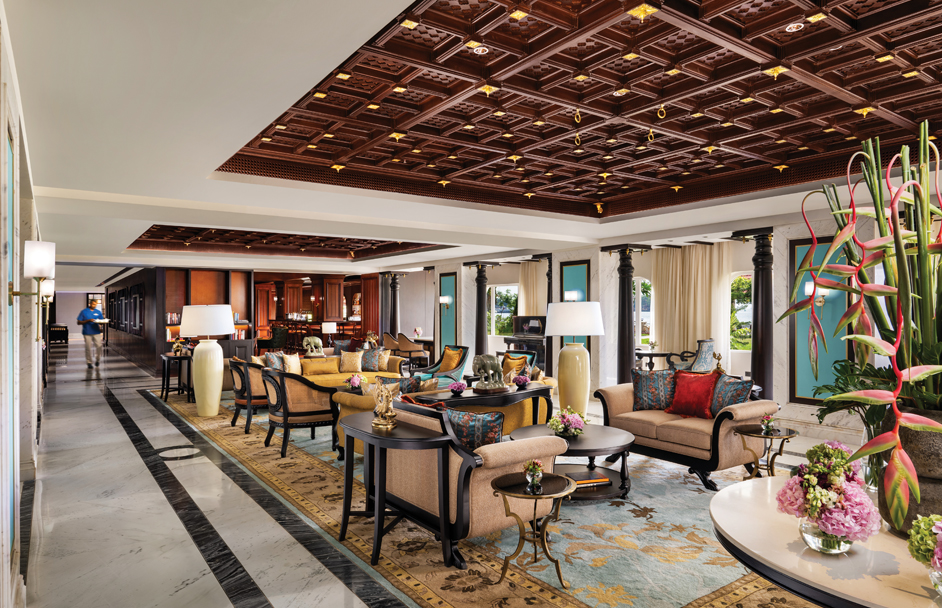
The hotel also offers holistic Innergise stay experiences that are the ultimate transformative retreats for wellness seekers. You can unwind, cultivate awareness, restore balance and tend to what matters most – your mind, body and inner energy – all under the watchful care of experienced practitioners. The Innergise package includes three specially curated meals each day from a carefully crafted Immunity Booster Menu and one-on-one consultation with a Wellness Coach. You can also choose signature therapies based on ancient practices that boast an array of physical and holistic benefits – such as detox and rejuvenation.
And the rejuvenation
Then there is the J Wellness Spa for a range of treatments from the generic deep tissue massage to more specific ones such as Nidra for sleep deprivation where you begin with a hot water shower to ease out the stress, go on to a full body massage with a fragrant bespoke blend of kewda, frankincense and brahmi infused in sandalwood and sesame oil and feel the tension ease out of your weary body. The magic fingered masseuse, Marak, will then proceed to give you a languid facial massage, gently pressing the marma points and transporting you to a place of immense calm and inner peace as she finishes with a dry scalp massage.
The other signature treatments on offer are Svastha for pain relief to ease out the soreness of knotted muscles with the use of hot compresses made of therapeutic herbs that help re-align and restore the proper flow of energy; Shodhana for detox whereby exfoliation is performed using silk gloves to stimulate the circulation of blood, lymph and energy; Sushupti for refreshing your skin and senses with a natural blend of 22 herbs, green gram flour, honey and fresh cream followed by a warm bath of raw milk; Pehlwan Maalish that involves a vigorous massage befitting a wrestler of yore using mustard oil; among several others all equally grounded in authentic Ayurvedic practices.
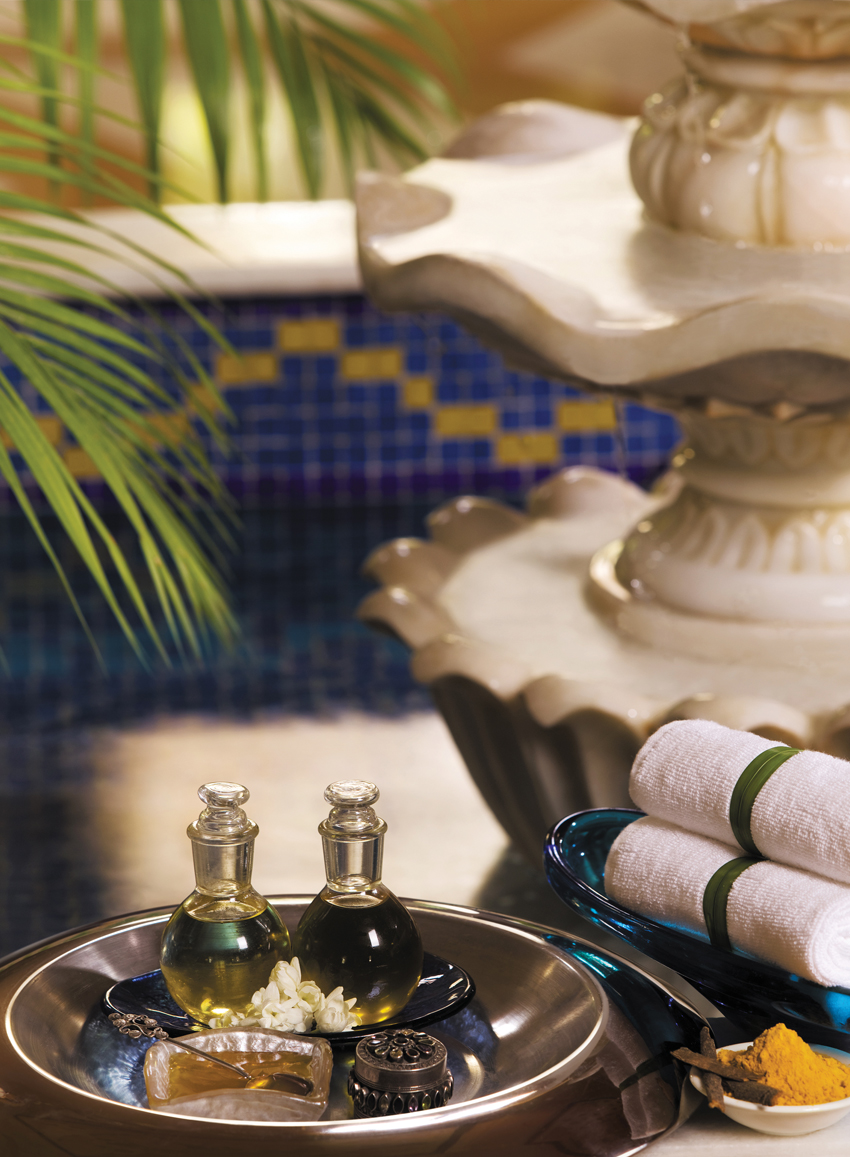
Into God's Own Country
Lalith Viswakumar, a Taj veteran who is Area Director, Operations and GM of the Taj Malabar, has an array of immersive experiences for those guests who wish to go off the beaten track. At his suggestion, I put on a bright orange safety jacket and boarded a motorboat from the hotel’s jetty to be whisked across the pristine blue waters of the Arabian Sea to Chathamma, a traditional fishermen’s village deep inside the backwaters. After a plentiful monsoon, everywhere green and blue merged in a seamless embrace and one could fully understand why this land has been called God’s Own Country.
After a tour of the village and its scenic traditional homes built from local wood and stone, I learnt to operate the signature Chinese fishing nets that define this part of Kerala’s shoreline. Called Cheenavala in Malayalam, these gangly cantilevered contraptions that droop towards the waters like square hammocks, are believed to have been introduced in Kochi by Chinese explorer Zheng He, from the court of the Kubla Khan. As much a tourist attraction as a functioning device, these fishing nets made of teak wood and bamboo poles, work on the principle of balance and are surprisingly easy to pull down, and raise, with the help of ropes.
For lunch, I went to Victory Dawn, a delightful bungalow now operating as a home-stay under Ama Stays & Trails. Beautifully appointed with period furniture and artifacts from the Dutch, Portuguese and British colonial period, the bungalow is so named as it was built in 1942 when the long-drawn out World War II ended spelling victory for Great Britain and the Allied forces. With its high-ceilings, open terraces, lush garden, profusion of in-door greenery, Victory Dawn offers a glimpse into a bygone era.
Here, a traditional Sadya lunch awaited me: a veritable feast on a leaf curated by Pradeep Chandran. While typically served as a traditional feast for Onam and Vishu, along with other special occasions such as birthdays, weddings and temple festivals, any occasion is a good occasion for a sadya! A heap of plain, local boiled rice is served along with stir fries and curries which include parippu, sambar, rasam, pulisseri as well as kaalan, avial, thoran, olan, pachadi, kichadi, koottukari, erissery, mango pickle, injipuli, mezhukkupuratti, naranga achaar (lime pickle), as well as papadam, plantain chips, sharkara upperi, local tiny bananas, plain curd and a wonderfully spiked buttermilk followed by a dessert called payasam.
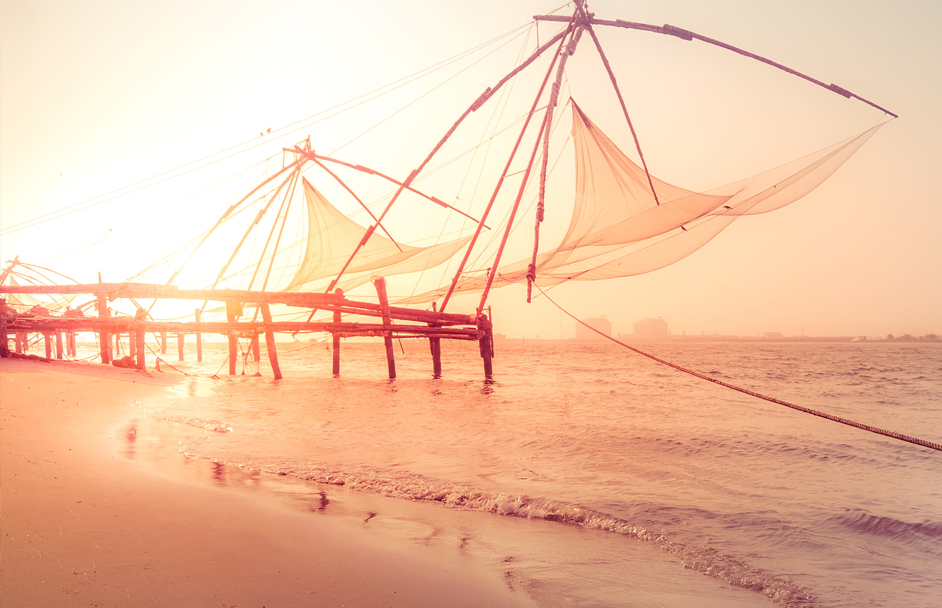
After busy day of sightseeing and shopping, there is plenty to keep you occupied: a sunset cruise that takes off from the hotel’s jetty and takes you on a wide round of the harbor as you watch the sun go down in a blaze of glory, followed by a beautiful ritual of lighting the lamps at sunset by the lady staff members dressed in traditional saris with flowers in their hair, and as you build up an appetite for dinner, a Kathakali dance performance in the beautifully illuminated lawns with the twinkling lights of the harbour making a perfect backdrop.
And then there is dinner comprising masala coated fish, some squid, prawn manga curry and a very tangy fish fillet steamed in banana leaf with appams and string hoppers followed by coconut milk mousse with locally grown dragon fruit. This delicious repast calls for a walk around the hotel’s periphery: damp breezes carrying the scent of the sea, an occasional gust of rain, gently lapping backwaters, what’s not to love about your stay at Taj Malabar?!
- Rakshanda Jalil. Previously published in The Taj Magaazine.




